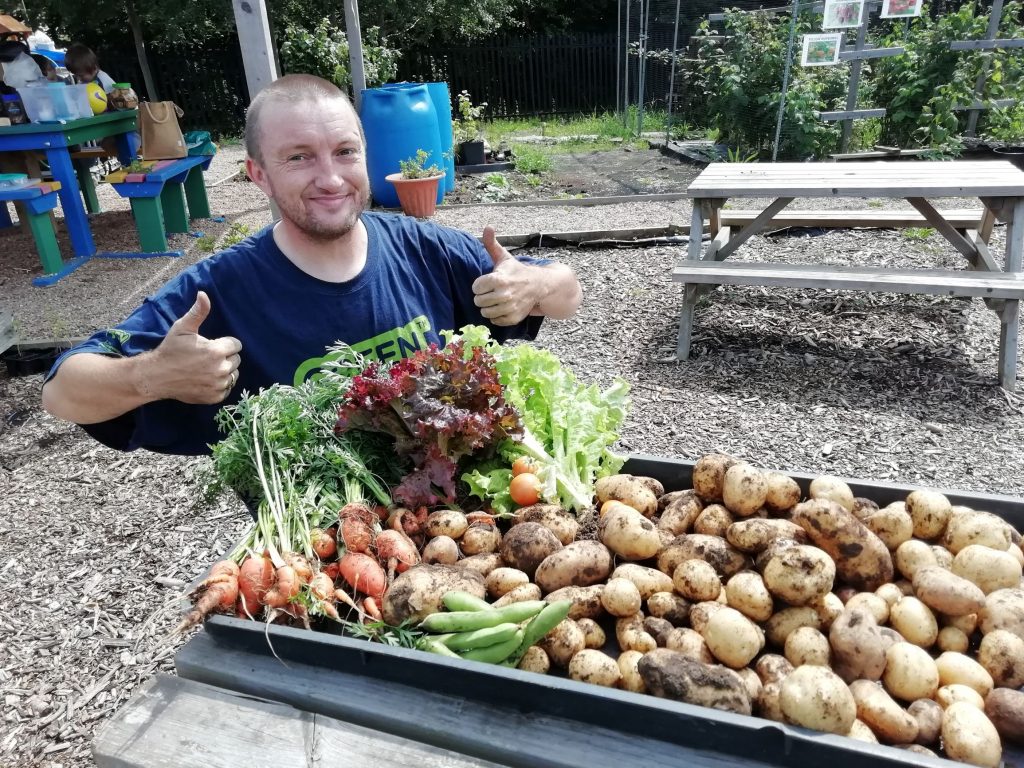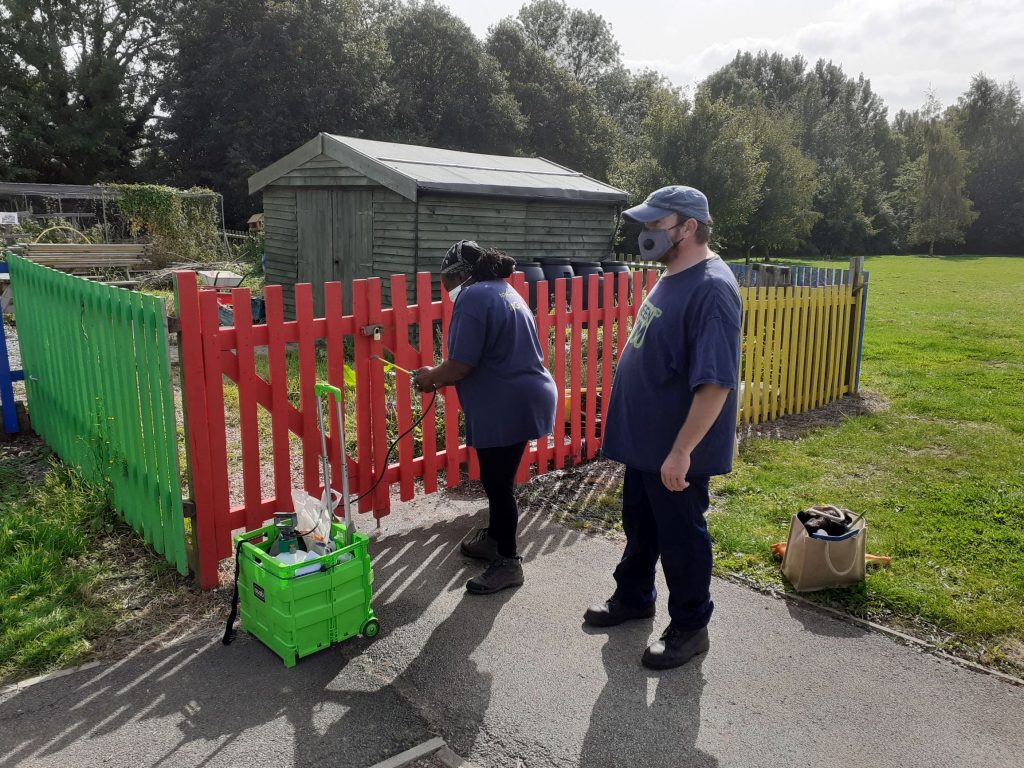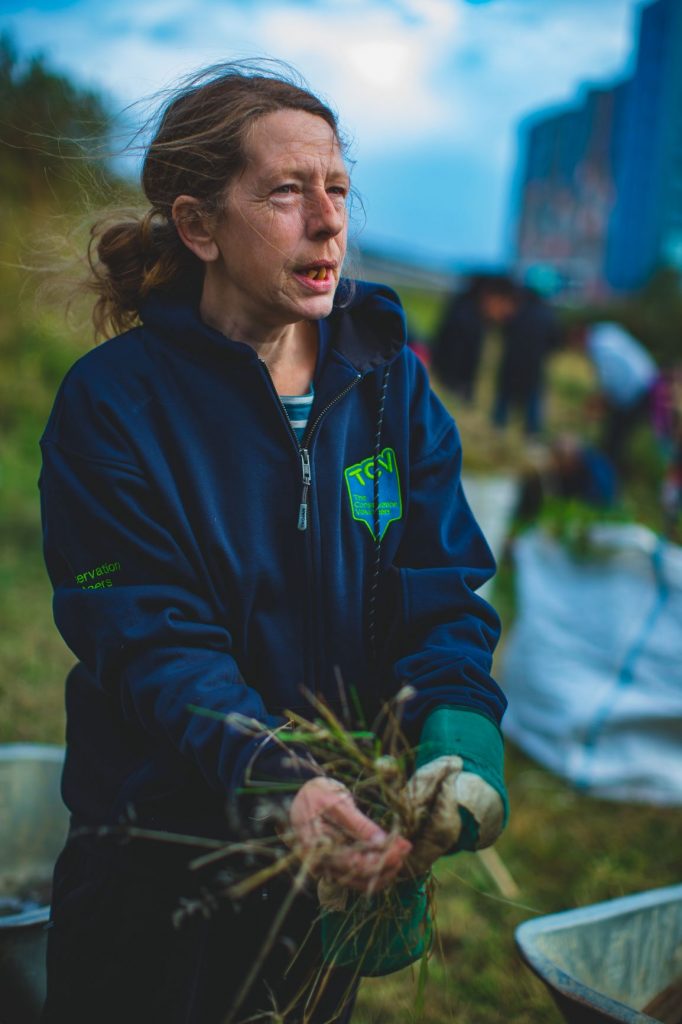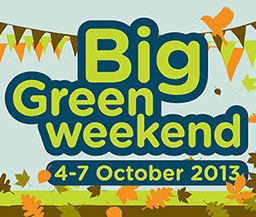Our Christmas fundraising appeal was inspired by David, a TCV volunteer, and his son Joseph.
Our fundraising team use valuable case studies like David’s to share with people the importance of the individuals that we work with. Also to highlight how volunteering in a green space has such a huge impact on many people’s lives and the lives of others.
If you would like to make a donation this Christmas to help others like David click here. We welcome your support.
For David, his regular attendance at his local Green Gym was invaluable to helping him cope with his mental health.
“I went along [to Green Gym] and I was really anxious, and I met Jules and Zoe. The first time was a bit rocky because I didn’t know anybody but it’s different now.
There isn’t a topic that we cannot discuss now whereas before I didn’t feel like I could talk to anybody, Julie has made me feel so welcome. We do this now, so that everyone feels welcome.”
David – TCV Volunteer
When we spoke to David about him being the focus of our Christmas appeal, he was incredibly supportive and he also wanted to contribute to raising awareness of mental health.

Good mental health is an asset and is also linked to good physical health – both of which support positive social and economic outcomes for individuals and society.
“Doing Green Gym and other volunteering gets me out of my own head. I still suffer from depression and anxiety but I am working on them.
Getting out of the house makes a huge difference.”
David – TCV Volunteer
Mental health disorders account for almost a quarter of the total burden of ill health in the UK.
Sadly, we are starting to see more evidence that COVID-19 has had significant impact on mental health and health inequalities.
Since UK’s lockdown in March, TCV surveyed volunteers that told us about the importance of volunteering for reducing isolation. 72% of surveyed volunteers said that their social connectedness had become worse since lockdown.
Despite this, we have also seen how communities have come together during the pandemic, highlighting the value of community support.
64% of our volunteers said that their value of ‘community’ increased during this time.
“I take one day at a time, I don’t want to get my hopes up. I don’t even know what my hopes are, I just enjoy doing what I’m doing and I want to continue doing it.
Last year after Christmas, we were back in the Green Gym on 28th December because we were so fed up of sitting at home and doing nothing.
We just wanted to get back in the Green Gym again.”
David – TCV Volunteer

Volunteering at TCV and exercising outdoors on projects with a purpose and with a social group has positive mental outcomes*. Projects such as our Green Gym contribute to participants’’ mental and physical health, as well as helping to improve local green spaces.
We know that the work of TCV helps thousands of people each year and we need your support to help our work continue – donate today.
David described how difficult his life was before joining TCV, and how different his life is now by volunteering at his local Green Gym. TCV has helped him with his mental health and given him confidence and connectedness to his community.
Please if you can make a donation this Christmas to help others like David click here.

 So, you’ve asked all the friends and family you have ever known for donations and now you’ve hit a bit of a wall. So where to go next? Colleagues, passer-bys and … complete strangers. But how do you get people you don’t know to believe in your cause and donate?
So, you’ve asked all the friends and family you have ever known for donations and now you’ve hit a bit of a wall. So where to go next? Colleagues, passer-bys and … complete strangers. But how do you get people you don’t know to believe in your cause and donate? Raising money can be a challenging activity, especially if you’ve already done 3 half marathons, a sky dive, 2 sponsored silences and 12 cake sales this year. Well done if you have by the way!
Raising money can be a challenging activity, especially if you’ve already done 3 half marathons, a sky dive, 2 sponsored silences and 12 cake sales this year. Well done if you have by the way! As we head towards winter, there’s no reason to feel down about the change of the seasons. The warm summer sun may feel like a memory, but there’s no reason to feel like we have to spend months sheltered indoors!
As we head towards winter, there’s no reason to feel down about the change of the seasons. The warm summer sun may feel like a memory, but there’s no reason to feel like we have to spend months sheltered indoors!